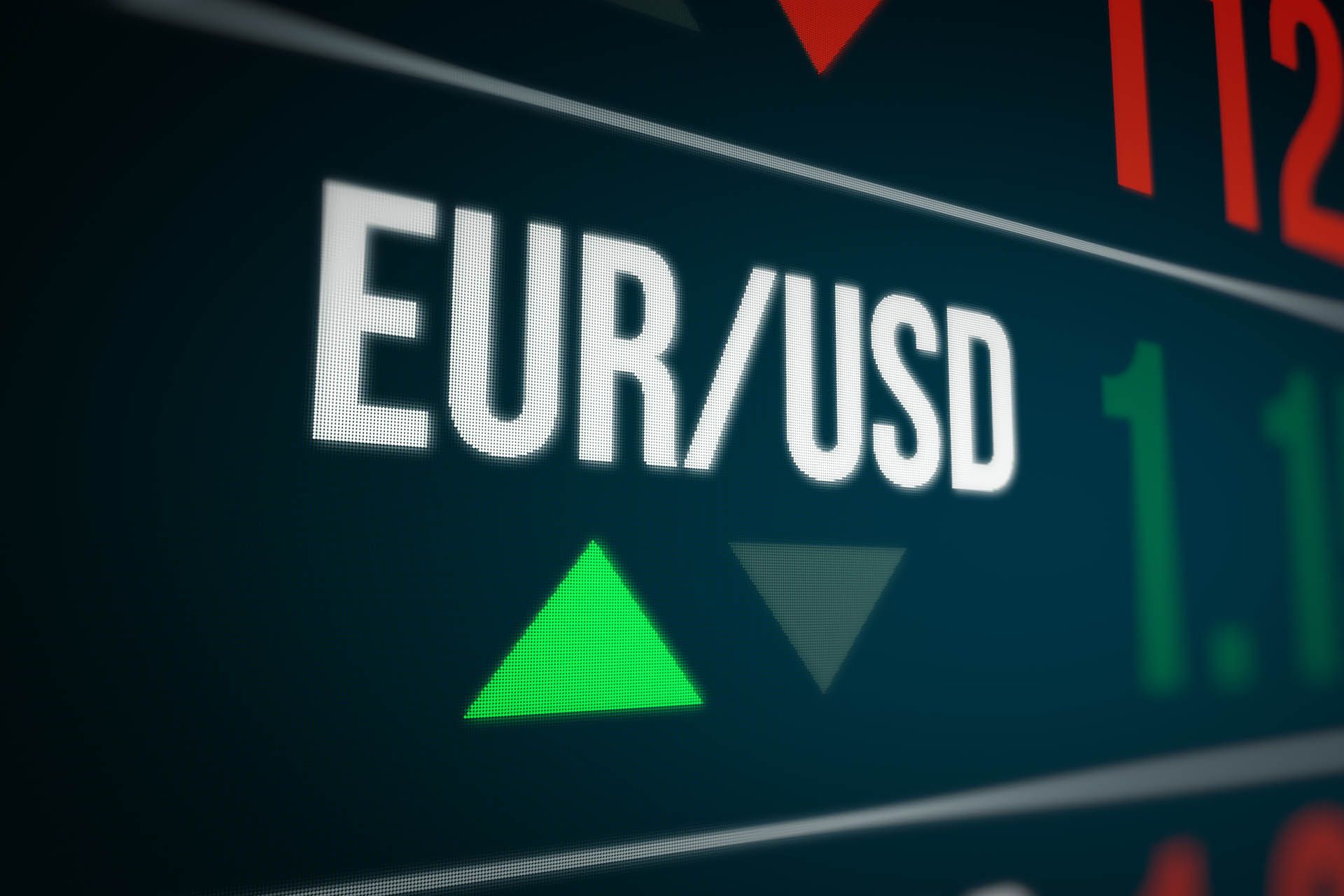Euro-Dollar Week Ahead Forecast: Looking to Stabilise but Downside Risks Linger
- Written by: James Skinner
-
- EUR/USD steadier but vulnerable to bearish market
- Battle ahead to hold above 200-wk moving-average
- As 'bullish divergence' warns of rebound from charts
- USD eyes CPI & FOMC minutes for Fed policy clues

Image © Adobe Images
- EUR/USD reference rates at publication:
- Spot: 1.1573
- Bank transfers (indicative guide): 1.1168-1.1250
- Money transfer specialist rates (indicative): 1.1470-1.1515
- More information on securing specialist rates, here
- Set up an exchange rate alert, here
The Euro-to-Dollar rate entered the new week cushioned by a long-term average at 1.1571 but is vulnerable to a bearish market and would risk sliding to new 2021 lows of 1.1495 if Wednesday’s inflation data or Federal Reserve (Fed) minutes provide the greenback inspiration for a fresh offensive.
Europe’s single currency already set a new 2021 low when slipping to 1.1527 last Wednesday but its subsequent recovery appeared to have left the Euro-Dollar rate’s 200-week moving-average at 1.1571 intact upon entry into the new week.
Meanwhile, last Wednesday’s low was accompanied by the extension of an earlier turn higher in the Euro-Dollar rate’s relative-strength-index (RSI) on the charts, denoting a ‘bullish divergence’ that can often serve as warning that a trend change is afoot.
It was exactly this signal that forewarned of a rally from 1.1665 to 1.1910 between late August and early September, and the recurrence of this divergence has already led some Euro sellers and Dollar buyers to become more cautious about the short-term outlook.
“That suggests some caution. We have further tightened the stop. Intraday rallies will find an accelerated downtrend at 1.1659, but key nearby resistance is the 1.1777 3-month downtrend,” says Karen Jones, head of technical analysis for currencies, commodities and bonds at Commerzbank.
Above: Commerzbank chart showing Euro-Dollar rate with technical indicators and analysis.
Secure a retail exchange rate that is between 3-5% stronger than offered by leading banks, learn more.
While cautious about price action over the coming days, Jones and the Commerzbank team have been sellers of the Euro-Dollar rate during recent weeks and have a bearish one-to-three week outlook that envisages a further slide toward 1.1395.
However, they’ve also flagged 1.1495 as likely to interrupt any further decline in the exchange rate and this level has also been noted by others.
“Our modest bear case scenario estimates downside euro levels of 1.1495, 1.13s and possibly 1.1290. Should the decline accelerate then we may see 1.1127, 1.10 and possibly 1.0817m” says Paul Ciana, chief technical strategist at BofA Global Research.
“We focus more on the 1.13s in Q4 because it means the declining trend line from the 2008 peak will be tested. Oftentimes, great resistance lines turn into support lines,” Ciana also said, in reference to the 1.1395 area currently featuring as Commerzbank’s one-to-three week target.
Ciana has been a seller of the Euro-Dollar rate since late July when an interaction between major daily moving-averages led to the formation of a ‘death cross’ on the Euro-Dollar chart and a ‘golden cross’ on U.S. Dollar Index charts.
The envisaged slippage to 1.1395 and anticipated support in that area is in keeping with the overall BofA Global Research forecast for Euro-Dollar to trade around 1.15 into year-end.
Above: BofA Global Research chart showing Euro-Dollar at weekly intervals with technical indicators and analysis.
{wbamp-hide start}
{wbamp-hide end}{wbamp-show start}{wbamp-show end}
Much about the outlook also depends, however, on the Euro and Dollar’s responses to this week’s action-packed economic calendar, which comes to life on Tuesday when Germany’s ZEW survey of business sentiment is out and culminates with publication of September’s U.S. retail sales report on Friday.
“Higher stocks and short covering still offer the best hope for a squeeze back over 1.16 until the ECB turns more hawkish on inflation,” says Kenneth Broux, a strategist at Societe Generale.
“The ECB accounts last week flagged that the baseline projection for inflation in 2023 was too low. This means an upward revision in December and a greater likelihood that inflation is on target at the end of the forecast horizon. This could get EUR/USD out of its hole below 1.16,” Broux says.
Along the way Wednesday will see both September’s U.S. inflation figures released as well as minutes from last month’s Federal Open Market Committee meeting, which will see Federal Reserve policy back in focus and could pose upside risks for the Dollar and downside risks to the Euro.
Above: Euro-Dollar rate at daily intervals with spread or gap between German and U.S. 02-year government bond yields (orange line). Shows Eurozone bond yields offering an increasingly diminished return relative to U.S. yields.
Chairman Jerome Powell said following September’s meeting that there’s broad support on the FOMC for a plan to fully wind down the Fed’s $120BN quantitative easing programme by the middle of next year.
The bank’s dot-plot of forecasts meanwhile suggested that a majority on the rate setting committee also expected to begin lifting interest rates before the end of next year.
The currency market will scrutinise Wednesday’s minutes all the more closely after September’s non-farm payrolls number came in at 194k last Friday, which was far below the near 500k number anticipated by consensus but enough for it to have been considered a strong number in pre pandemic times.
A "decent" employment report for September was Chairman Powell's own precondition for any November vote to begin winding down the quantitative easing programme.
“EUR/USD saw a drop in net positioning in the week ending 5 October worth 3.3% of open interest. It is the first time since 3 March 2020 that the euro is in net-short positioning (currently worth 3% of o.i.),” says Francesco Pesole, a strategist at ING.
“The fact that now the majority of speculators have turned bearish on EUR/USD is a strong signal of how the dollar’s bullishness has consolidated on the back of the prospect of Fed tapering/tightening and headwinds to global risk sentiment,” Pesole says.
Above: Euro-Dollar rate shown at weekly interval with Fibonacci retracements of 2020 recovery indicating possible areas of support while major moving-averages denote supports and resistances.









